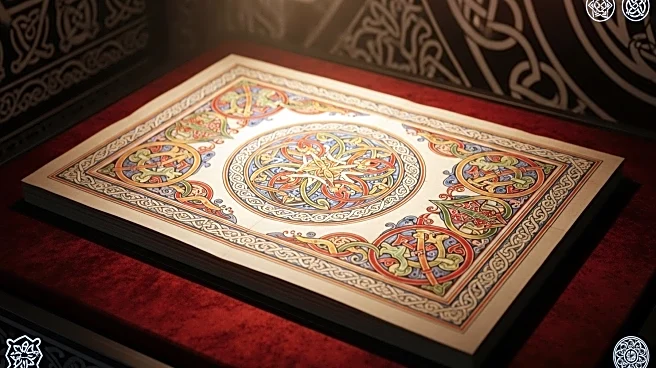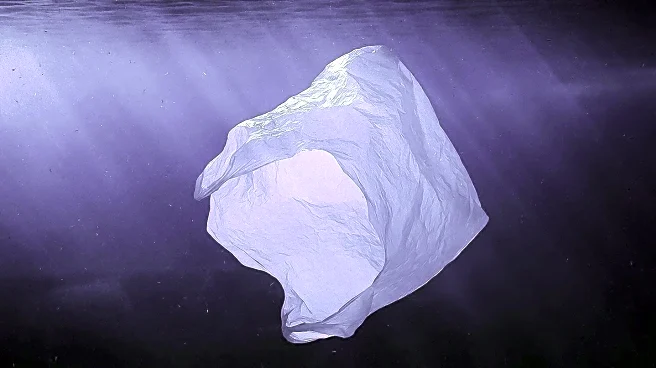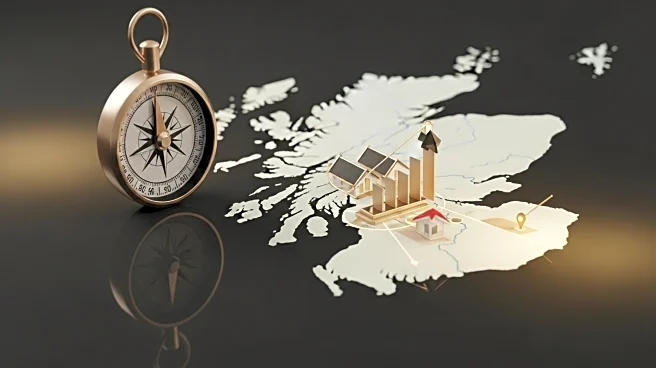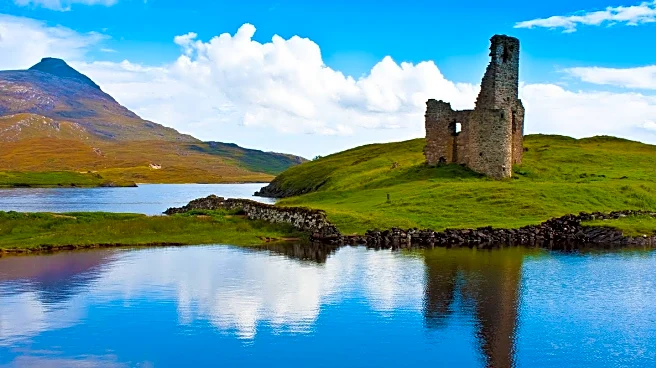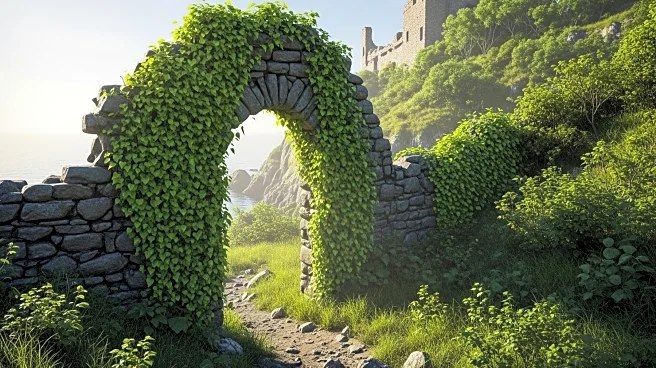What is the story about?
What's Happening?
Recent research by Dr. Victoria Whitworth proposes that the Book of Kells, a renowned medieval manuscript, was likely created in Pictish eastern Scotland rather than on the island of Iona. Traditionally believed to have been started in the late eighth century at Iona and later moved to Kells in Ireland, the manuscript's origins are now being reconsidered. Whitworth's findings suggest that a monastery in Portmahomack, Easter Ross, is the probable site of its creation, based on the production of vellum and sophisticated carvings similar to those found in the Book of Kells. This challenges the long-held belief that the manuscript was made at Kells, which was founded in AD807 but only gained importance in the later ninth century.
Why It's Important?
This research could significantly alter the understanding of early medieval Scotland and the artistic capabilities of the Picts, who were previously thought not to have produced any surviving manuscripts. The Book of Kells is a critical piece of cultural heritage, and its potential Scottish origins may lead to a reevaluation of the Picts' role in medieval art and literature. This shift in perspective could impact historical narratives and the study of medieval manuscripts, highlighting the interconnectedness of artistic influences across regions during that period.
What's Next?
Dr. Whitworth plans to publish her findings in a forthcoming book, 'The Book of Kells: Unlocking the Enigma,' which may further influence scholarly debate and research on the manuscript's origins. As the academic community digests these findings, there may be increased archaeological interest in Portmahomack and other Pictish sites to uncover more evidence supporting this theory.
Beyond the Headlines
The implications of this research extend beyond historical scholarship, potentially affecting cultural identity and heritage preservation in Scotland. Recognizing the Picts' contributions to medieval art could lead to increased efforts to preserve and study Pictish sites and artifacts, enriching the cultural narrative of Scotland and its historical significance.
AI Generated Content
Do you find this article useful?
